“Woman, Life, Freedom” and the Progressive Academe
On September 13, 2022, a 22-two-year-old Kurdish woman named Jina (Mahsa) Amini was arrested by “Morality Police” in Tehran, Iran, with the charge of defying the vaguely defined hijab codes. Three days later, an image of Jina in a coma on a hospital bed, with visible signs of head trauma, went viral. The police had beaten her into a coma over “improper” hijab, it appeared. Public outrage was already boiling when she was declared dead only hours later on September 16th. At Jina’s crowded funeral in her hometown of Saqqez, Kurdistan, mourning women took off their headscarves, furiously waved them above their heads, and chanted a decades-old Kurdish slogan at the top of their lungs: “jin, jiyan, azadi.” More than 9 weeks into the protest movement that started on that day, the three words have now become the embodiment of every virtue to which Iranians and many others around the world could ever aspire.
A lot has already been written about the significance of the movement as potentially the first-ever feminist revolution; its unprecedented breadth, depth, and intersectionality; its roots in Kurdish grievances and resistance history; its generational aspect; its connection to the longstanding women’s rights movement in Iran; its explicitly revolutionary goal of toppling the regime; and the brutality of government’s repressive efforts that has so far killed “more than 380” citizens, including “at least 58 children,” and led to “more than 16,000” detainments. I will not attempt to capture the enormity of this historical moment in this short piece. Instead, I’d like to address an epistemological and moral dilemma that I, as an Iranian woman in diaspora and an academic studying contemporary Iran, am better placed to address.
The question is, are we on the verge of Islamophobia if we promote the “Woman, Life, Freedom” uprising, with its characteristic unveilings and head-scarf burnings and other ostensibly anti-religious symbolic gestures? Are we enabling the imperial, interventionist gaze if we defend a local women’s liberation fight as a universally commendable one? My short answer is no. My longer answer unfolds below.
In recent years, the main characteristic of the progressive scholarly stance on Iran has been one of humanization. The humanization narrative emphasizes that Iran is not just the Islamic Republic, or a repressed society under totalitarianism, or an exotic, unique culture to be cherished with an Orientalist lens. It is, rather, a people with as many diversities, intricacies, and problems worthy of study as any other. Sociological analyses of contemporary Iran should not be limited to the 1979 revolution, protests, political structure, and regional political economy. Nor should its problems (human rights and women’s rights included) be blown out of proportion with an interventionist, savior attitude. Life goes on in Iran, with all the richness of Islamic and non-Islamic traditions and innovations weaved together. So do struggles against human rights violations and women’s rights disappointments, just as anywhere elsewhere in the world. In this way, the humanization approach confronts the neo-con, war-hawk politics justified by the savior attitude and reinforces the broader post-colonial, anti-imperialist agenda progressive scholars have adopted regarding the Global South in general. Its point is not to normalize the Iranian government’s atrocities, but to highlight how life, including resistance, is lived under this government, with relative normalcy. This is a position that I have endorsed and practiced to the best of my ability in the few years of my academic career. But things have changed, and we need to push the boundaries of the humanization approach; to stay true to its principles, we may need to break out of its confines.
Behind the massive protests in Iran under the banner of Woman, Life, Freedom is a deep frustration born out of decades of fighting repression and trying to live a “normal” life under abnormal circumstances. Despite aspirations of gender equality that match the highest level of global awareness, and in addition to obstacles faced by women all around the world, Iranian women have suffered myriad aggressions on a daily basis, solely due to the Islamic-ideological nature of their government. As corruption, mismanagement, and controversial foreign policy filled the society to the brim, the government’s insistence on controlling lifestyle to the last detail became even more intolerable. Jina’s death at the hands of morality police was the final blow. Today, protestors refuse to accept that life is, or ever has been, normal. They have ceased to live their daily lives as before. “For want of an ordinary life” is a favorite verse in the song that has become the movement’s anthem, and “Down with the normal [as lived under the Islamic Republic]” is written on walls in spray paint.
Asef Bayat captures the gist poignantly: “It is as though people are retrieving their ruined lives, perished youth, suppressed joy and a simple dignified existence they have been denied. This is a movement to reclaim life.”
Acknowledging the universality of the message “Woman, Life, Freedom” and the uprising’s regime-change agenda could feel contradictory to our postcolonial, humanizing stance. The humanization narrative has never denied the everyday oppression of citizens under the Islamic Republic (specifically exemplified in the mandatory hijab). It has, however, focused on understanding civilians’ subtle methods of resisting, tolerating, or both, while living a life that is normal in its own way. This narrative is difficult to maintain when, for the massive number of Iranians on the street, life is not normal anymore, and mandatory Islamic laws are not tolerable for another day. More importantly, the recognition of the abnormality of life prior to this moment is indeed a strong source of the movement’s grievances. People are announcing their dissatisfaction with how abnormal their lives have been, piercing a core idea of the humanization narrative. As a result, while many academics have taken strong stances on their professional and non-professional platforms, many scholars and institutions appear hesitant to publicly address Iran’s current situation.
I believe, however, that the humanizing narrative should fully embrace the current rupture, according to the very principles that persuaded the progressive academe—persuaded us—to render the pre-uprising life in Iran as human, as normal. These principles consist of recognizing a people’s life, aspirations, and imaginations in their own right and, consequently, of avoiding the imperialist approach that demonizes their government and vies for savior roles.
Now that people in Iran, in their magnificent diversity and disharmony, are articulating their wants, hopes, and dreams in slogans, actions, writings and songs in new ways, it is on us to stay true to their new normal. The fear is that the new everyday is universalist, even invoking tropes from Enlightenment (many Iranian women, and people in general, want freedom not within particular local bounds, but as citizens of the globe); that it enables interventionism (by bringing to fore the government’s absolutely unjustified brutality); or that it appears Islamophobic (by burning headscarves and flipping turbans). But in line with the determination to acknowledge the agency of citizens of the Global South, it is on us to tackle these intricacies.By making Iranians’ frustrations comprehensible in the context of decades of life under repression, we can acknowledge that the movement’s universal message of freedom is not essentially prone to imperialism, Islamophobia, or interventionism. This is not a call to halt critical thinking or to whitewash over the many flaws that already surround the Woman, Life, Freedom movement. It is a call to recognize that even though they lived life as best as they could before this historic moment, Iranians have the right to revolt against intolerable pressure from religious, allegedly anti-imperialist authorities, just like Americans have the right to protest religiously-inspired abortion bans. Walking the streets without mandatory hijab while trembling with fear and bursting with hope, demanding the end of a government that was once a glimmer of hope for the global left’s anti-imperialist ambitions is the new normal, and so should be its embrace by the progressive academe.
Maryam Alemzadeh is a historical and cultural sociologist, specializing in revolutions, state building, and grassroots militias. She is in the Oxford School of Global and Area Studies and the Middle East Centre at St. Antony’s College, University of Oxford.
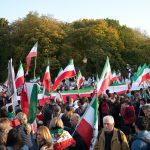
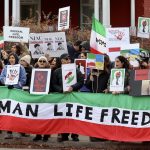

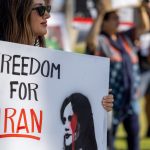
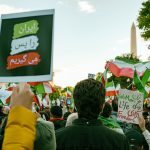
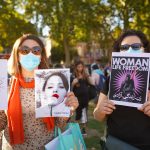

Comments